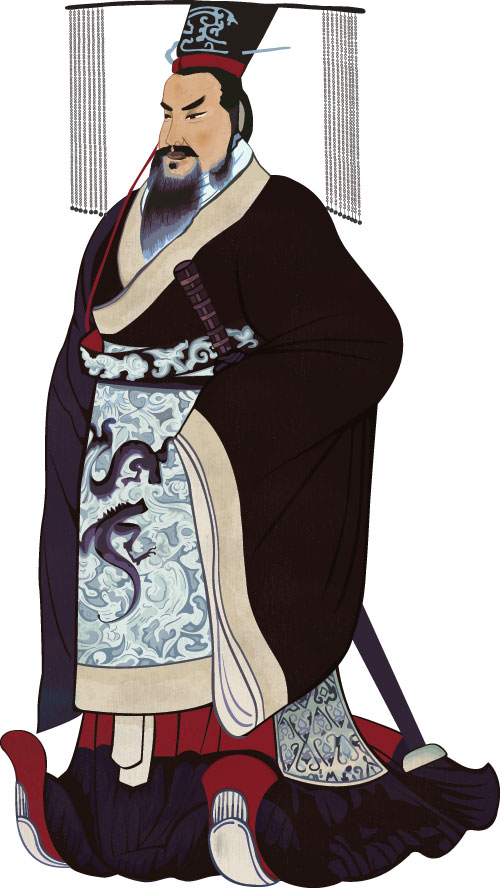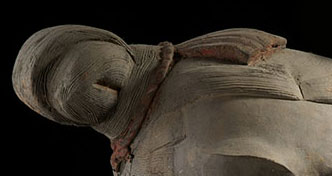Top 10 facts about the Terracotta Warriors
How were the terracotta warriors discovered? What did they originally look like? Discover more about these fascinating figures.

1: They were discovered completely by accident
The Terracotta Army was discovered on 29 March 1974 when farmer Yang Zhifa uncovered fragments of pottery when digging a well. This pottery led to the discovery of the first warrior of the famous Terracotta Army. Quite the find!
2: There were no historical records of them existing
The discovery of the Terracotta Warriors was a complete surprise to everyone because there are no historical records of them, or of an underground army. They had sat untouched underground for more than 2,200 years. This only adds to the mystery, as it is now the largest and most important tomb site in China.
3: The scale of the discovery is immense
Since the discovery of the Terracotta Army, more than 2,000 warriors and horses have been excavated from three different burial pits with an estimated 6,000 still buried underground. It is perhaps the enormous scale of the discovery that has added to the mystery and captivated the world, leading people to start describing the warriors as the 8th wonder of the world.

Qin Shi Huang, China’s First Emperor
4: Amazingly, no two figures are exactly alike
Incredibly, despite the vast number of warriors, each warrior has unique facial features and styles. The warriors of different ranks were buried in battle formation to represent a real army and are split into infantrymen, archers, generals, cavalrymen, charioteers, officers, and guards of honour - all different in their expressions, clothing, and hairstyles.
5: They were part of the First Emperor’s search for immortality
China’s First Emperor Qin Shi Huang wanted to live forever. He spent a huge amount of resources building a magnificent underground empire, equipped with everything he would need for the afterlife. He had palaces, an army to protect him, chariots for travelling in, stables full of horses, entertainers and even his concubines. Covering an area of 56 square kilometers, it is the biggest burial site on earth. In 1987 the site was given UNESCO World Heritage status and is a major tourist attraction in Xi’an.
6: It's not just soldiers
More recent discoveries include terracotta acrobats and strongmen. Another pit contained 15 terracotta musicians and 13 bronze water birds to entertain the Emperor in the afterlife. There was also a pit full of stone armour and several pits full of horse skeletons. You can see some of these amazing objects in the exhibition.
7: The figures were an early feat of mass-production
Government labourers and local craftsmen created the warriors in workshops. The warriors have the stamps or names of their makers, including administrators, craftsmen and foremen. Each warrior was built from the ground upwards using different body parts made from thick coils of clay and the head was made and fired separately. Sculptural details such as hair, facial features and costume were added by hand before the figure was dried and eventually fired in a huge kiln.
8: The warriors were actually painted
Example of paint on a terracotta warrior © Mr. Ziyu Qiu
Originally the warriors were not the terracotta colour that we see today but would have been painted in bright colours. After firing, each terracotta warrior was covered with lacquer before various bright pigments were applied with colours indicating different ranks. You can see traces of paint on two of the warriors in our exhibition.
9: The warriors carried real weapons
After the warriors were painted, they were then placed in military formation in the pits and were equipped with real bronze weapons. More than 40,000 weapons have been found in the partially excavated warrior pits including swords, lances, spears and arrows. Recent studies have revealed they were never used in battle but were produced specifically for burial with the terracotta army.
10: The greatest mystery is still to be revealed: the First Emperor’s tomb has never been opened
Emperor Qin Shi Huang’s actual tomb remains a mystery to archaeologists and historians as it is still sealed up. There have been geophysical surveys of the tomb mound, but the mausoleum itself has not been excavated. The tomb was written about by Han dynasty historian Sima Qian, who describes ‘palaces and scenic towers for a hundred officials’, as well as many rare artifacts and treasures. In addition, the two major rivers of China, the Yangtze and the Yellow River, were simulated in the tomb using mercury and the tomb ceiling was decorated with the heavenly constellations. From here, Qin Shi Huang could continue to rule over his empire even in the afterlife.
This article was created alongside our 2018 landmark exhibition 'China's First Emperor and the Terracotta Warriors'.

